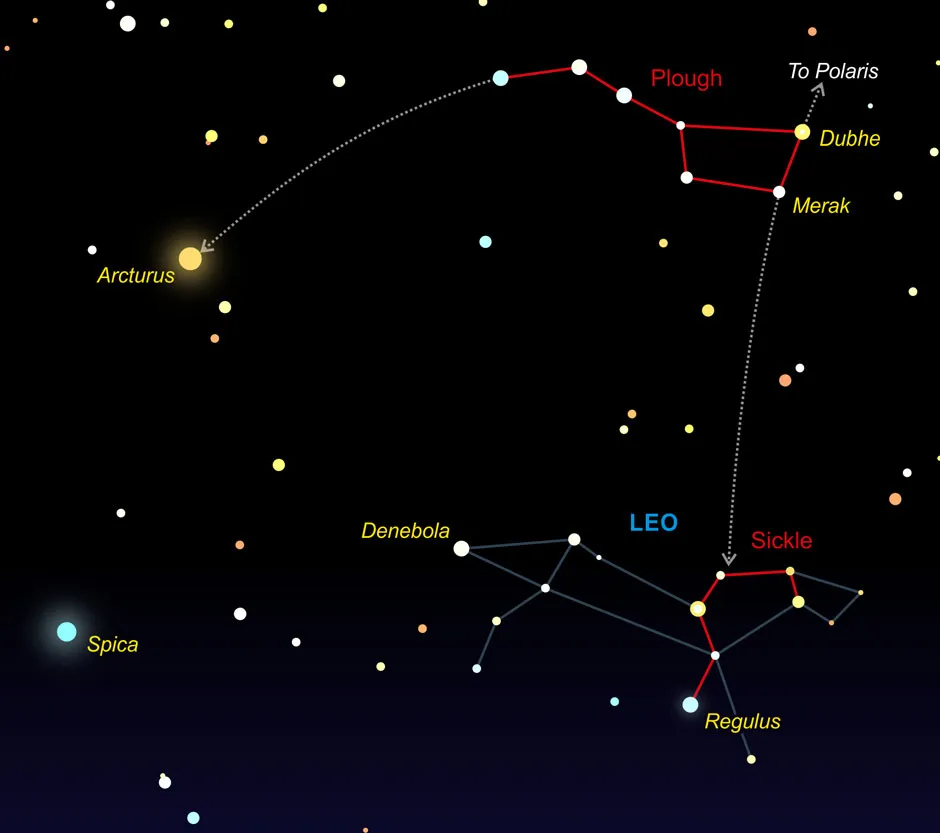Spring is a great time to find Leo,asthe constellationisvisible almost every night during March, April and May. The constellation is easy to identify because of the backwards question mark pattern created by the stars that make up the lion’s face and front legs. Plus, three bright stars form a triangle that makes up the other end of the lion, its tail and back legs.
The easiest way to find Leo isbyusing the pattern of stars (known as an asterism) called the Plough or Big Dipper. At this time of year,the Ploughwill be high in the sky’s northern hemisphere.
Within the Plough lie two ‘pointer stars’ named Merak and Dubhe. These stars can be used to point in the direction of theNorthStar (Polaris) but we can also use them to find Leo.

Once you’ve found the Plough, imagine the asterism is a pan, with a slightly bent handle. Merak and Dubhe are the two stars that make up the edge of the pan furthest away from the handle.
If the pan looks upright to you (with the handle coming out the pan’s top), the pointer star on the bottom will be Merak. Follow Dubhe to Merak and continue in that direction and you’ll reach the backwards question mark, also known as the Sickle, in Leo.
If you’re uncertain whether you’ve found Leo, just check its surroundings. Leo sits between Gemini (which can be recognised by its bright stars Castor and Pollux) and Arcturus, a bright star in the constellation Bootes. You can find Arcturus by following the arc of the Plough (see diagram above).
Looking for stargazing tips? Check out our complete astronomy for beginners UK guide.
Read more:
- How do I find the North Star?
- How can I see Betelgeuse?
- How can I see the Pleiades star cluster?
- How can I spot the International Space Station?
To submit your questions email us at questions@sciencefocus.com (don't forget to include your name and location)

